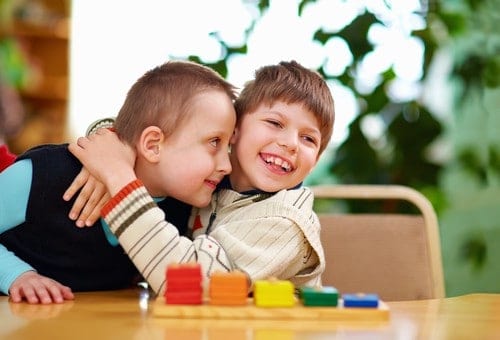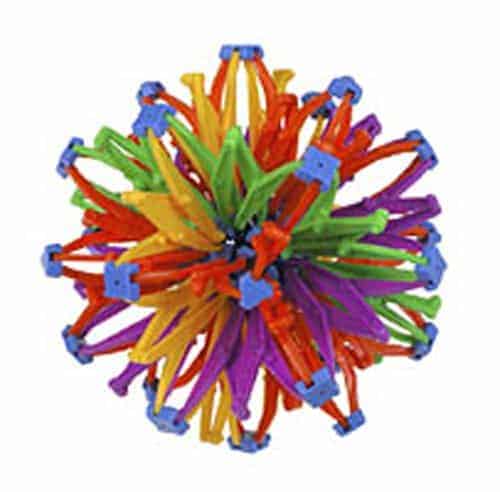Creating a space to teach mindfulness to kids with autism 
We were asked a question about the types of tools people could use if they wanted to teach their kids (who are on the autistic spectrum) how to feel calmer and less stressed using mindful activities.
Expert advice
We write about this subject all the time…particularly in the 2nd book – “Connected Kids‘.
However we have taught thousands of people how to teach kids meditation, and thought that many of our Connected Kids Tutors would have great, practical advice.
We were right!
Here are some wonderful ideas that may help your kids on the spectrum bring their energy back into balance with meditation and mindfulness.
To help with grounding (feeling safe in their body):
- “Definitely use a gym ball/fitness ball for pupils to sit on and ground themselves.
- Spiky balls for feet for those that like more sensations.
- Parachutes (and feathers) for getting pupils to feel air gently across their face.
- I also liked foil for crunching on feet and bubble wrap (but that might not be allowed (heath and safety).
- Also things that you can shake that vibrate so they can get the sensations in their hands/feet/face“
Helping focus on the breath:
“A little boy I worked with (who about a year later was diagnosed with autism ) absolutely loved my hoberman sphere. He liked using it for breathing but also loved the way it opened when he threw it in the air. He would also put things like little balls inside to see if they would fall out when he opened it. He said the red ball was like his heart inside his body”
Julie Woolrich Moon, Connected Kids Tutor
Mindful Movement:
“Create a labyrinth on the floor or even the figure of 8. Often mindful movement helps to calm the busy mind. If it’s raised or of a different texture then that brings the awareness to their feet. I found the labyrinth & figure of 8 as a physical activity hugely successful especially when fine motor skills with hands may actually bring about frustrations of trying to “draw” out figures of eight or shapes with breathing exercises.”
Katie Cody-Duffy, Connected Kids Tutor
Imagination:
“I teach a little boy one to one with autism he adores nature and loves visualisations so we talk about different animals and I lead him on a visualisation as if he were the animal, he loves this and totally immerses himself it’s so amazing to watch him as he see’s hears and feels as the animal Zoe Murray, Connected Kids Tutor “Umbrellas, look at Richard Hirstwood, he creates beautiful things with them, sensory stories etc and safe zones.” Sam Tedder Connected Kids student “Big meditation cushions and heavy fleece blankets to help create own comfortable space? Diffuser to explore smell further. x” Beth Cameron-Lyle, Connected Kids Tutor Claire Brockley, Connected Kids student Jo McQuillan, Connected Kids Level 2 Donna Fairley, Connected Kids Tutor Emily Waller, Connected Kids Level 2 “My daughter was working in an ASD preschool recently and they had kinetic sand which the kids loved it is sand that sticks together so it doesn’t create a mess. They also had little stepping stones that you can buy with different textures on them so they can feel it on their feet “ Patricia Tracey, Connected Kids “my 10 year old Autistic/OCD client uses mandalas to release his feelings since we used them in our work together. At a children’s party over Christmas he became overwhelmed, asked for his colouring, took himself off to a quiet room and patiently completed a mandala by himself. Afterwards he said he just needed to ‘see some of his feelings’ and now that they were outside, he was OK again. Nina Farr, Connected Kids Level 2 When she came to my group session she simply clung to her mum and shied away from everything. She did not focus well on any of the activities that I was doing with her. She did pick up on singular words that I used and connected them to other words that were quite random. I did a bit of work with her mum and gave her some exercises to do at home. But I genuinely did not know if she had gained much from the work I did. Then I got this this e mail. “We’ve been using the laser idea and also doing some stomping in the mornings and before things like swimming and reading. Her teachers have said she’s been great since half term, she had a fantastic swimming lesson on Monday and even got star of the week today at gymnastics for listening! I’m so happy and amazed. “ This proved me wrong and taught me yet again about how we judge ourselves based on our perceptions that are often not true. How can we fail when we work from our hearts and we know that everything is divinely led. I will remember this next time I have self doubt “ Angela Connolly, Connected Kids Level 2 We don’t think that the toolkit is limited, when we teach in class/online we try to encourage you to tune in and connect to the children’s energy so that you choose the mindfulness tool or activity that suit their needs. We hope this list of ideas has inspired you and if you have any other questions about teaching children and teens meditation, please let us know. If you would like to learn how to create your very own meditations for kids/teens try our Connected Kids level 1 course – online or in-class) (This is the gateway to our professional level) Or find ideas and tips in our book Calm Kids (beginners) or Connected Kids (working with special needs/anxiety).![]() 😊
😊![]() ❤️ xxx”
❤️ xxx”Sensory issues mindfulness:
 d good about themselves.
d good about themselves. 
![]() ”
” The final word…
My background is that I gave a specialism in additional learning needs, I have worked with lots of children and wondered if she may be on the scale of autism. How to teach kids of all abilities how to be mindful



